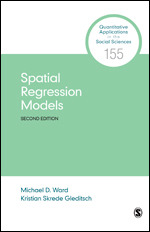Spatial Regression Models
- Michael D. Ward - Duke University, USA
- Kristian Skrede Gleditsch - University of Essex, UK
Quantitative Methods in Geography | Regression & Correlation | Sociological Research Methods
Using social science examples based on real data, the authors illustrate the concepts discussed, and show how to obtain and interpret relevant results. The examples are presented along with the relevant code to replicate all the analysis using the R package for statistical computing. Users can download both the data and computer code to work through all the examples found in the text. New to the Second Edition is a chapter on mapping as data exploration and its role in the research process, updates to all chapters based on substantive and methodological work, as well as software updates, and information on estimation of time-series, cross-sectional spatial models.
Available with Perusall—an eBook that makes it easier to prepare for class
Perusall is an award-winning eBook platform featuring social annotation tools that allow students and instructors to collaboratively mark up and discuss their SAGE textbook. Backed by research and supported by technological innovations developed at Harvard University, this process of learning through collaborative annotation keeps your students engaged and makes teaching easier and more effective. Learn more.
Supplements
“Ward and Gleditsch provide a valuable and highly accessible introduction to spatial analysis, including data and code for in-text examples and other course materials in an online repository. This is an excellent supplement for any introduction to spatial analysis!”
“This ‘Little Green Book’ by Ward and Gleditsch introduces the fundamental concepts of spatial regression models. It is good for both introductory and intermediate level of students who like to implement spatial regression models into their research.”
“This text provides a solid introduction to spatial thinking and spatial regression modeling for social scientists that transcends disciplinary boundaries, and will provide a valuable resource for students and professionals alike who are new to this material.”
“Spatial statistics is becoming increasingly important to all fields of social science. This book does a good job of providing a brief and essential introduction to core ideas in spatial statistics.”

